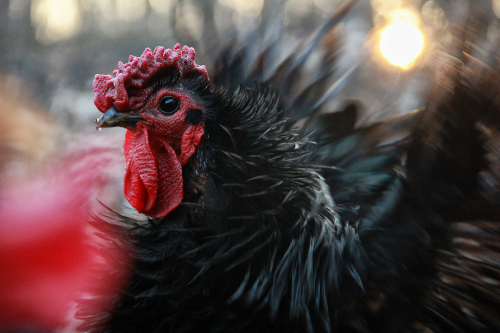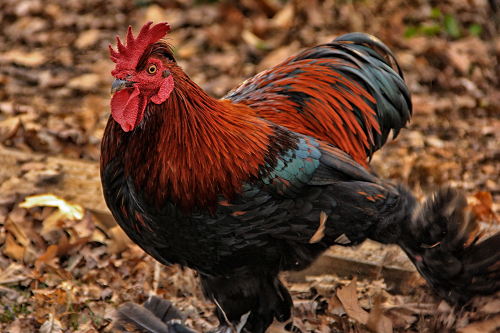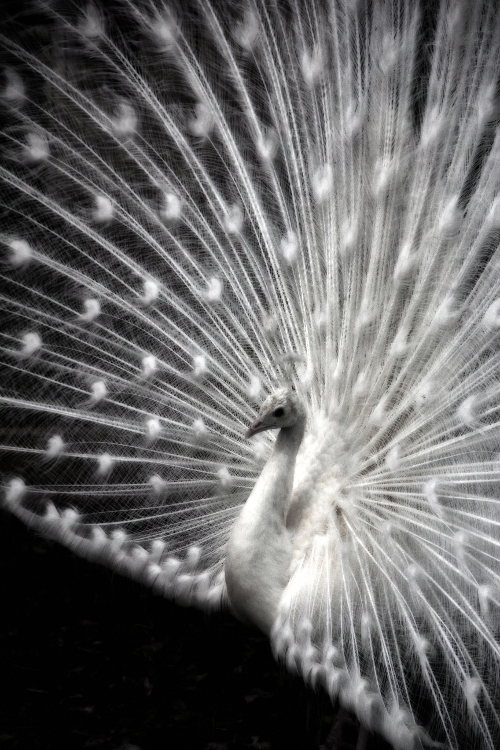What’s in a Name – A Poultry Terminology Guide
What’s In A Name – Poultry Terminology
 Whether you are new to poultry or you have years of experience under your belt, you have probably at some point come across a poultry term that you were unfamiliar with. Between the technical industry terms and the slang terms that have become common practice, there are a lot of terms to wade through when getting to know your birds. Many of the terms are very similar and may only differentiate the subject in a small way. For instance, Cock and Cockerel sound similar but they are used very specifically in regards to chickens. A Cock is a adult male chicken, while a Cockerel is an immature male chicken. Then in some cases the terms are the same across several species. The term Hen refers to the adult female chicken, turkey, duck, and pigeon. So whether you just want to sound like a seasoned poultry enthusiast in conversation or you’re looking for a way to get the upper hand in the Science and Nature category for your next game of Trivial Pursuit, the following guide of the most common terms should help you understand What’s In A Name. I hope you’re paying attention, because there will be a test later; don’t worry though, it is strictly voluntary.
Whether you are new to poultry or you have years of experience under your belt, you have probably at some point come across a poultry term that you were unfamiliar with. Between the technical industry terms and the slang terms that have become common practice, there are a lot of terms to wade through when getting to know your birds. Many of the terms are very similar and may only differentiate the subject in a small way. For instance, Cock and Cockerel sound similar but they are used very specifically in regards to chickens. A Cock is a adult male chicken, while a Cockerel is an immature male chicken. Then in some cases the terms are the same across several species. The term Hen refers to the adult female chicken, turkey, duck, and pigeon. So whether you just want to sound like a seasoned poultry enthusiast in conversation or you’re looking for a way to get the upper hand in the Science and Nature category for your next game of Trivial Pursuit, the following guide of the most common terms should help you understand What’s In A Name. I hope you’re paying attention, because there will be a test later; don’t worry though, it is strictly voluntary.
Let’s start with chickens. In many conversations with the uninitiated, I have had to explain that the term Chicken does not specifically refer to the female of this poultry species. In fact Chicken (Gallus domesticus) is defined as a domestic fowl descended from the jungle fowl of southeastern Asia and cultivated for its eggs, flesh and even feathers. It is also slang for a cowardly person, but through the years I have found most of my fowl to be anything but timid. So, if Chicken denotes the broad category, let’s look at the specifics inside the category.
Cock – also known as a Rooster, is an adult male chicken.
Hen – is an adult female chicken
Cockerel – is an immature male chicken, generally under one year of age
Pullet – is an immature female bird. The term is used more broadly to include several species of birds, but it is most commonly used to describe a young female chicken, generally under one year of age.
Chick – also known as a Peep, is a baby chicken.
Clutch – is a group of baby chicks or eggs.
Brood – is to care for those baby chicks or eggs, but it may also refer to a group of chicks
Broody – is a hen that is actively sitting on a clutch with the intent to hatch them.
Straight Run or unsexed chicks- is how chicks are often purchased, it means that the sex of the bird is unknown.
Sexed chicks – means that the sex of the chick has been determined with reasonable certainty, usually around 90% accuracy.
Capon – is a castrated male chicken. Since the reproductive organs are internal, this requires surgery.
Broiler – is the term for a chicken that is raised specifically for its meat.
Fryer – is a young meat type chicken.
Spent – is a term for a hen that is no longer laying eggs.
Biddy – is a slang term for a young laying hen.
Chook – is an Australian term for a chicken, but it is also a common term in England and increasingly common in the U.S. when referencing small flocks.
A Group of Chickens is simply known as a Flock.
 Moving on to turkeys… Turkeys are a large North American bird (Meleagris gallopavo) that has been widely domesticated for food, most familiarly for Thanksgiving dinner celebrations.
Moving on to turkeys… Turkeys are a large North American bird (Meleagris gallopavo) that has been widely domesticated for food, most familiarly for Thanksgiving dinner celebrations.
Tom – also known as a Gobbler, is an adult male turkey.
Hen – is an adult female turkey.
Jake – is young male turkey.
Jenny – is a young female turkey.
Poult – is a baby turkey (or pheasant).
A group of turkeys in the wild is simply known as a Flock, but a group of domesticated turkeys is known as a Rafter or a Gang.
 Peafowl is another term that gets misused a lot. I’ll even admit to using the term Peacocks to describe my peafowl flock, but the reality is that the cock is the male and collectively they are known as peafowl. The terms for peafowl are easy to remember if you know the basic terms for chickens, you just add “Pea” to the beginning.
Peafowl is another term that gets misused a lot. I’ll even admit to using the term Peacocks to describe my peafowl flock, but the reality is that the cock is the male and collectively they are known as peafowl. The terms for peafowl are easy to remember if you know the basic terms for chickens, you just add “Pea” to the beginning.
Peacock – is an adult male peafowl.
Peahen – is an adult female peafowl.
Peachick – is a baby peafowl.
While there seem to be many different terms for groupings of peafowl, the most common are a Muster, an Ostentation or a Pride.
 Guinea Fowl is a breed of poultry originally from Africa. They are commonly raised for meat, but their affinity for the troublesome arachnids known as Ticks, make them popular for pest control as well. They are effective natural sentinels because they are very watchful and extremely territorial. They are also very social birds and flocks of 25 birds roosting communally is not uncommon. Guinea Fowl terms are also relatively similar to chicken terms.
Guinea Fowl is a breed of poultry originally from Africa. They are commonly raised for meat, but their affinity for the troublesome arachnids known as Ticks, make them popular for pest control as well. They are effective natural sentinels because they are very watchful and extremely territorial. They are also very social birds and flocks of 25 birds roosting communally is not uncommon. Guinea Fowl terms are also relatively similar to chicken terms.
Guinea Cock – is an adult male guinea fowl.
Guinea Hen – is an adult female guinea fowl.
Guinea Cockerel – is a young male guinea fowl under one year of age.
Guinea Pullet – is a young female guinea fowl under one year of age.
Keet – is a baby guinea fowl.
A group of guinea fowl is called a Rasp, a Confusion or a Mob, but Flock is also a generally accepted term.
 Duck is the common name for a great number of both fresh and salt water species in the family Anatidae. Included in this family are also geese and swans, but ducks are normally smaller with shorter necks and legs.
Duck is the common name for a great number of both fresh and salt water species in the family Anatidae. Included in this family are also geese and swans, but ducks are normally smaller with shorter necks and legs.
Drake – is an adult male duck.
Hen – is an adult female duck.
Duckling – is a baby duck.
A group of ducks can be known by many names, they can be called a Badelynge, a Bunch, a Brace, a Flock, a Paddling, a Raft, a Team or a Dover.
 Geese are wild or domesticated water birds also of the family Anatidae. They generally have a shorter neck than a swan and a shorter, more pointed bill than a duck. Although they are classified as waterfowl, they spend the majority of their time on land.
Geese are wild or domesticated water birds also of the family Anatidae. They generally have a shorter neck than a swan and a shorter, more pointed bill than a duck. Although they are classified as waterfowl, they spend the majority of their time on land.
Gander – is an adult male goose.
Goose – is an adult female goose.
Gosling – is a baby goose.
A Group of Geese is called a Gaggle when they are not in flight. When they are in flight, they are known as a Skein or a Wedge.
 Swans are also from the family Anatidae. They are most famous for the fact that they mate for life
Swans are also from the family Anatidae. They are most famous for the fact that they mate for life
Cob – is an adult male swan.
Pen (no, that is not a typo) – is an adult female swan.
Cygnet – is a baby swan.
A group of swans in the wild is called a Herd, while a group of swans in captivity it is called a Fleet
 Pigeons and doves comprise over 300 species. The terms Dove and Pigeon are often used interchangeably, although in general Doves refer to the smaller species.
Pigeons and doves comprise over 300 species. The terms Dove and Pigeon are often used interchangeably, although in general Doves refer to the smaller species.
Cock – is an adult male pigeon.
Hen – is an adult female pigeon.
Squab – also known as a squeaker, is a baby pigeon until it has fledged, which is around 30 days.
A group of pigeons is called a Flock, Flight or Kit.
As a disclaimer, I would like to say that in the essence of due diligence, I made every effort to make sure the terms in this article were correct. Whenever possible, I enlisted the help of people that are considered experts in their respective poultry fields. I have no doubt that there are terms that I may have missed, but these are the most common terms you might encounter. I assure you that I made an honest attempt to be thorough.
Did you learn something? Think you know them all now? Why not Test Your Knowledge


